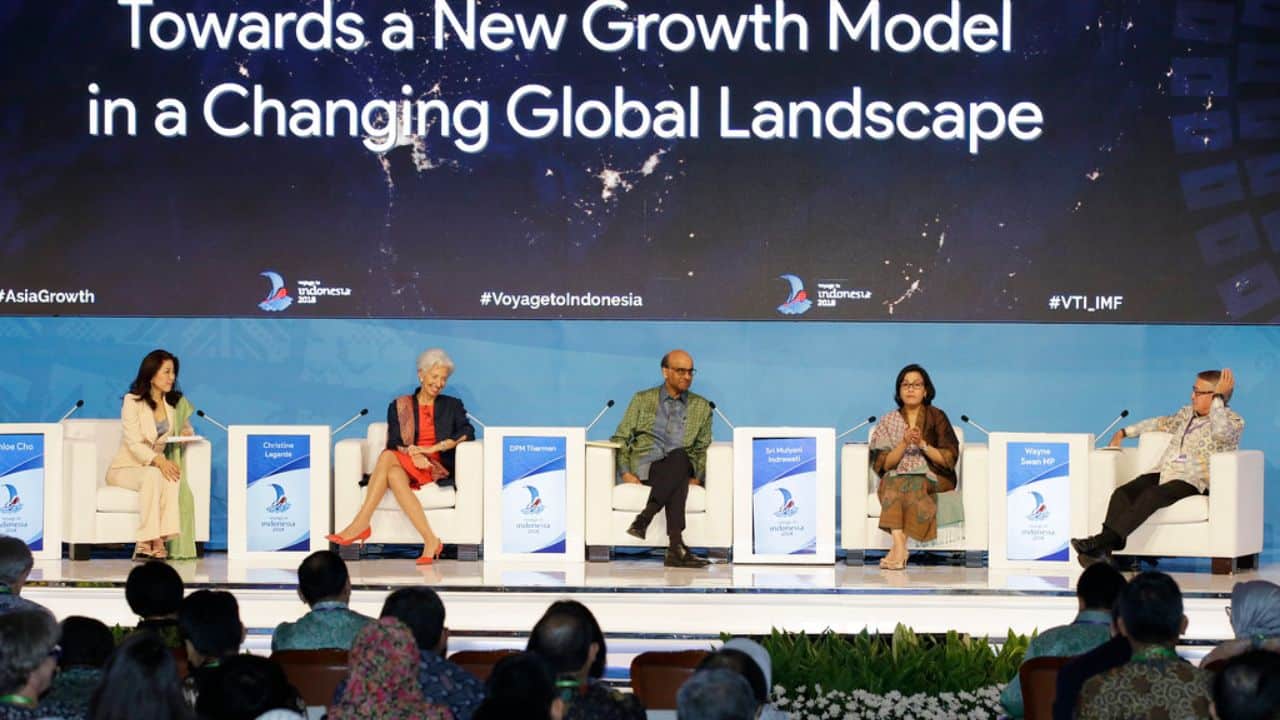Gross Domestic Product (GDP) serves as a critical metric for assessing the magnitude of a nation’s economy. The conventional approach for gauging a country’s GDP involves the expenditure method, wherein the total is derived by aggregating expenditure on fresh consumer goods, new investments, government outlays, and the net value of exports.
This method provides a comprehensive picture of economic activity within a nation’s borders. This article aims to provide insight into the 13 largest economies in the world in 2024, arranged by their GDP.
By examining these economies, we better understand global economic dynamics and the shifts shaping the future of international trade and finance.
Top 13 Largest Economies in the World 2024
Which are the top economies in the world? According to the latest data, the largest GDP (PPP) economies 2024 are China, the United States, India, Japan, Germany, Russia, Indonesia, Brazil, the United Kingdom, France, Turkey, Mexico, and Italy. These rankings reflect a mix of established economic powerhouses and rapidly growing markets.
| Rank | Country | GDP (USD billion) | GDP Per Capita (USD thousand) |
| 1. | China | 35,291 | 13.14 |
| 2. | United States of America | 28,781 | 85.37 |
| 3. | India | 14,594 | 2.73 |
| 4. | Japan | 6,721 | 33.14 |
| 5. | Germany | 5,687 | 54.29 |
| 6. | Russia | 5,473 | 14.39 |
| 7. | Indonesia | 4,721 | 5.27 |
| 8. | Brazil | 4,274 | 11.35 |
| 9. | United Kingdom | 4,029 | 51.07 |
| 10. | France | 3,988 | 47.36 |
| 11. | Turkey | 3,832 | 12.76 |
| 12. | Mexico | 3,434 | 15.25 |
| 13. | Italy | 3,347 | 39.58 |
1. China
– GDP (USD billion): 35,291
– GDP Per Capita (USD thousand): 13.14
– Region: East Asia
– Annual GDP Growth Rate: 5%
China continues to dominate the global economy, holding the top GDP (PPP) position. The Chinese economy predominantly hinges upon manufacturing, exports, and investment, which have driven its rapid development.
China possesses an extensive workforce, robust governmental backing, infrastructural advancements, and an expeditiously expanding consumer market. This combination of factors has positioned China as a global manufacturing hub and a key player in international trade.
Despite challenges such as an aging population and environmental concerns, China’s strategic initiatives, like the Belt and Road Initiative, aim to sustain its growth trajectory by enhancing global trade networks and investment opportunities.
2. United States of America (U.S.A)
– GDP (USD billion): 28,781
– GDP Per Capita (USD thousand): 85.37
– Region: North America
– Annual GDP Growth Rate: 2.6%
The United States continues to uphold its status as a major global economy and the wealthiest country, steadfastly preserving its pinnacle from 1960 to 2023. The diversity of the U.S. economy is remarkable, with significant contributions from the services sector, manufacturing, finance, and technology industries.
The United States enjoys a substantial consumer market, fostering innovation and entrepreneurial spirit, resilient infrastructure, and advantageous business conditions. This broad-based economic strength supports sustained growth and resilience against global economic fluctuations.
Additionally, the U.S. dollar’s role as the world’s primary reserve currency underpins its ability to maintain a large external national debt, enabling substantial international trade and investment flows.
3. India
– GDP (USD billion): 14,594
– GDP Per Capita (USD thousand): 2.73
– Region: South Asia
– Annual GDP Growth Rate: 7%
India has achieved a significant milestone by becoming the world’s 3rd largest economy by GDP (PPP). With its robust service sector, burgeoning tech industry, and large workforce, India’s economic growth is a testament to its rising global influence.
The IMF estimated India’s GDP growth to be 6.8 percent in April 2024 and revised the forecast to 7 percent in July 2024, citing improved private consumption, especially in rural areas, as a critical driver.
India’s diverse economy, encompassing information technology, services, agriculture, and manufacturing, capitalizes on a broad domestic market, a youthful and technologically adept labor force, and an expanding middle class. These factors collectively position India as a significant economic force with substantial growth potential.
4. Japan
– GDP (USD billion): 6,721
– GDP Per Capita (USD thousand): 33.14
– Region: East Asia
– Annual GDP Growth Rate: 0.7%
Japan’s notable economy is distinguished by its progressive technology, manufacturing prowess, and service industry. Prominent sectors encompass automotive, electronics, machinery, and financial domains.
Japan garners recognition for its unwavering work ethic, pioneering technological advancements, and exceptional exports of superior quality. Despite challenges such as an aging population and limited natural resources, Japan has maintained its economic strength through innovation and efficiency.
Japan’s cultural emphasis on quality and precision has fostered a reputation for excellence in manufacturing and technology. The nation’s advanced infrastructure and strategic trade partnerships further bolster its economic resilience and global competitiveness.
5. Germany
– GDP (USD billion): 5,687
– GDP Per Capita (USD thousand): 54.29
– Region: North-central Europe
– Annual GDP Growth Rate: 0.2%
Germany remains a leading global economic powerhouse, known for its strong focus on exports and precision engineering. The German economy is renowned for its robust automotive, chemical, and pharmaceutical sectors, contributing significantly to its economic strength.
Germany derives substantial advantages from its proficient labor force, intense research and development initiatives, and a pronounced commitment to fostering innovation. These factors have enabled Germany to maintain a competitive edge in high-value manufacturing and technology industries.
Furthermore, Germany’s strategic location within Europe and its role as a vital member of the European Union facilitate extensive trade and economic cooperation with neighboring countries, reinforcing its financial stability and growth prospects.
6. Russia
– GDP (USD billion): 5,473
– GDP Per Capita (USD thousand): 14.39
– Region: Eastern Europe and Northern Asia
– Annual GDP Growth Rate: 3.2%
Russia occupies the 6th spot, buoyed by its vast natural resources, particularly energy. Despite geopolitical challenges and economic sanctions, Russia’s economy remains significant on a global scale due to its oil and gas exports.
International commodity prices heavily influence the country’s economic performance, and efforts are being made to diversify the economy beyond energy.
Russia’s strategic position and natural resource wealth provide a foundation for financial stability and growth, although political and economic reforms are necessary to enhance its long-term prospects.
7. Indonesia
– GDP (USD billion): 4,721
– GDP Per Capita (USD thousand): 5.27
– Region: Southeast Asia
– Annual GDP Growth Rate: 5%
Indonesia’s rapid economic growth has positioned it as the 7th largest economy by GDP (PPP). Natural resource exports, manufacturing, and a growing services sector drive the country’s economy.
With its expanding middle class and abundant natural resources, Indonesia is a rising star in the global market. The government’s focus on infrastructure development and economic reforms aims to sustain high growth rates and attract foreign investment.
However, regional inequality and corruption must be addressed to ensure inclusive and sustainable growth.
8. Brazil
– GDP (USD billion): 4,274
– GDP Per Capita (USD thousand): 11.35
– Region: South America
– Annual GDP Growth Rate: 2.1%
Brazil’s economy exhibits a breadth of sectors, encompassing agriculture, mining, manufacturing, and services. Notably, it is a prominent global hub for agricultural production and exportation, with critical exports including soybeans, coffee, and sugar.
Commodity prices, domestic consumption, and infrastructure development influence Brazil’s economic growth. Despite political instability and economic inequality, Brazil’s abundant natural resources and large domestic market provide a solid foundation for future growth.
The country’s ongoing efforts to diversify its economy and attract foreign investment are crucial for sustaining its economic momentum.
9. United Kingdom (U.K.)
– GDP (USD billion): 4,029
– GDP Per Capita (USD thousand): 51.07
– Region: Western Europe
– Annual GDP Growth Rate: 0.5%
The economy of the United Kingdom is characterized by a blend of services, manufacturing, finance, and creative sectors. London is a worldwide financial center, attracting foreign investments and facilitating global financial transactions.
The UK’s economic expansion is further shaped by its trade alliances and integration into international markets. Despite challenges posed by Brexit, the UK has maintained its financial stability through adaptive trade policies and economic reforms.
The UK’s strong emphasis on education and innovation drives growth in high-value industries, reinforcing its position as a leading global economy.
10. France
– GDP (USD billion): 3,988
– GDP Per Capita (USD thousand): 47.36
– Region: Western Europe
– Annual GDP Growth Rate: 0.9%
The French economy is characterized by diversification, with key industries including aerospace, tourism, luxury goods, and agriculture. France is renowned for its robust social welfare system, well-developed infrastructure, and substantial investment in research and development.
These factors contribute to its economic resilience and ability to adapt to global economic changes. France’s commitment to social equity and environmental sustainability further enhances its attractiveness as a destination for foreign investment.
The nation’s strategic location in Western Europe and active role in the European Union facilitates extensive trade and economic cooperation, supporting sustained economic growth.
11. Turkey
– GDP (USD billion): 3,832
– GDP Per Capita (USD thousand): 12.76
– Region: Western Asia and Southeastern Europe
– Annual GDP Growth Rate: 3.1%
Turkey’s economy is a dynamic blend of modern industry, commerce, and traditional agriculture. Major industries include electronics, petrochemicals, and automotive production. A large and growing domestic market marks the Turkish economy, strategic geographic location, and substantial foreign investment.
Political turmoil and involvement in regional armed conflicts have led to financial and currency market instability and uncertainty about Turkey’s economic future in recent years. However, Turkey’s strategic importance and efforts to integrate into the global economy continue to drive its growth and development.
12. Mexico
– GDP (USD billion): 3,434
– GDP Per Capita (USD thousand): 15.25
– Region: North America
– Annual GDP Growth Rate: 2.4%
Mexico is the 12th-largest economy in the world, with a diverse economy that includes manufacturing, oil production, and a growing service sector. Over the past three decades, Mexico has emerged as a manufacturing economy under free trade agreements with the United States, Canada, and 50 other countries.
Many major U.S. manufacturers have integrated supply chains with counterparts or operations in Mexico. Mexico supports a variety of exports, including consumer electronics, vehicles, auto parts, and petroleum and agricultural products.
The international drug trade constitutes an ongoing challenge to Mexico’s development, contributing directly to violence and corruption in the country. Weak legal institutions have made it difficult to regulate and integrate the large informal economy that employs more than half of Mexico’s workforce.
13. Italy
– GDP (USD billion): 3,347
– GDP Per Capita (USD thousand): 39.58
– Region: Southern Europe
– Annual GDP Growth Rate: 0.7%
Italy boasts a highly developed market and is the third-largest economy in the European Union. The nation is known for its influential and pioneering business sector, which includes high-value industries such as fashion, automotive, and luxury goods.
Italy’s diligent and competitive agricultural industry also plays a significant economic role. Despite facing challenges such as high public debt and an aging population, Italy’s strong export sector and commitment to innovation continue to drive economic growth.
The country’s cultural heritage and tourism industry further contribute to its financial stability and global appeal.
Analysis and Implications
The 2024 rankings reflect the dynamic nature of the global economy, with significant shifts in economic power and influence. China’s continued dominance underscores its vast financial resources and strategic initiatives like the Belt and Road Initiative, which aims to expand its global trade and investment networks.
India’s rise to the 3rd position highlights its potential as a significant economic force, driven by a youthful population, increasing digital innovation, and a diverse economy.
The United States’ slip to the second spot signifies changing economic dynamics, including challenges such as economic inequality and rising healthcare costs. However, its diverse industrial base and role as a global financial leader ensure its continued significance on the world stage.
Japan and Germany continue to showcase the strength of advanced industrial economies, focusing on high-value manufacturing and technological innovation.
Emerging markets like Indonesia and established players like the UK and France reflect diverse economic strengths and challenges. These shifts in economic rankings will likely influence global trade, investment patterns, and geopolitical strategies in the coming years. Policymakers and businesses must adapt to the evolving financial landscape to leverage new opportunities and mitigate potential risks.
Summary
The global economic landscape of 2024 has undergone significant shifts, with some countries rising to prominence and others maintaining their positions. The top economies, as measured by GDP, play a crucial role in shaping global economic stability and growth.
China, the United States, India, Japan, Germany, Russia, Indonesia, Brazil, the United Kingdom, France, Turkey, Mexico, and Italy are leading examples of how diverse economic strengths and strategic initiatives drive global influence.
Measuring GDP helps understand a country’s economic health and its role on the global stage. As countries take measures to reduce corruption, open their markets, and take advantage of their natural resources and new technologies, they can see their GDP grow.
The 2024 estimates highlight significant shifts and trends that will shape the global economic landscape in the coming years, making it essential for policymakers and businesses to stay informed and adaptable.








































